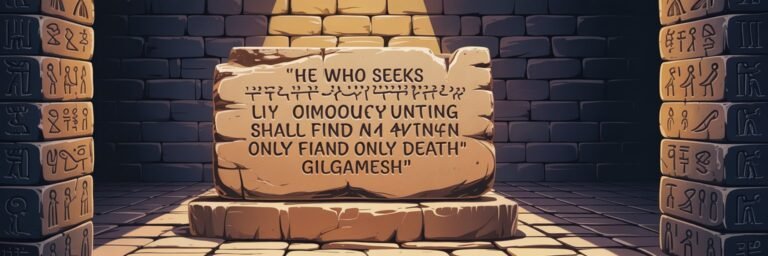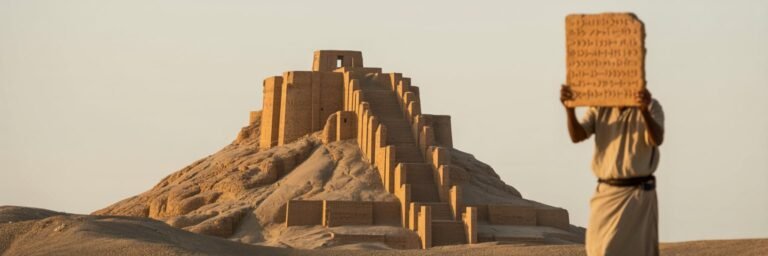INTRODUCTION
Ancient Mesopotamia, often lauded as the ‘cradle of civilization,’ existed between the Tigris and Euphrates rivers, in modern-day Iraq, from the Bronze Age until the Iron Age. Despite its barren landscape today, over 5,000 years ago, this region bustled with technological and cultural revolutions, heralding unparalleled advancements in human civilization that would culminate in the birth of writing, agriculture, law, and urbanization. This remarkable civilization, however, burgeons with mysteries make it an intriguing subject of historical examination.
HISTORICAL BACKGROUND
Mesopotamia, meaning ‘land between the rivers’ in Greek, was home to an assortment of societies, including the Sumerians, Akkadians, Babylonians, Assyrians, and Persians. These dynamic civilizations emerged from 5000 to 1500 BCE, exhibiting remarkable technological, cultural, and administrative acumen. The first signs of recognizable culture surfaced with the Sumerians who invented the earliest form of writing, cuneiform, around 3200 BCE. This form of wedge-shaped script, inscribed on clay tablets, set foundations for recorded history.
Building on Sumerian traditions, emerging civilizations such as the Akkadians, under the world’s first empire-builder Sargon the Great (2334-2279 BCE), and the Babylonians, under the famous law-giver Hammurabi (1792–1750 BCE), harnessed the bountiful rivers to create prosperous societies. Meanwhile, the Assyrians developed a fearsome military machine, renowned for their expertise in siege warfare. All of these societies passed on a shared culture of innovation and ingenuity.
THEORIES AND INTERPRETATIONS
A focal point of discussion among scholars has been the advancement of Mesopotamian civilizations despite their challenging environment. British archaeologist Julian Reade opined that it was the very adversity that spurred their advancements, as they learned to control and harness the unpredictable rivers for agriculture.
Contrarily, French archaeologist Jean Bottero proposed that the harsh environment necessitated centralization and rigorous bureaucratic management to harness resources effectively. Hence, pioneering social stratification and the birth of class society. Other theories emphasize the potential influence of long-distance trade, whereby ideas, technologies, and cultural innovations were exchanged, fostering the evolution of complex societies.
MYSTERIES AND CONTROVERSIES
While Mesopotamian history is dense with facts, it is also dotted with unresolved questions and controversies. One perpetual mystery is the fate of the Sumerians. Around 2000 BCE, their culture began to spiral inexplicably into obscurity. Languages evolve, but how did the entire Sumerian society, including its language, cease to exist despite its significant influence? Was it a result of internal decline, environmental disasters, or conquerors assimilating the civilization?
Another controversy revolves around the Epic of Gilgamesh. Certain aspects of the epic eerily parallel Biblical narratives, stirring questions about the relationship between ancient Mesopotamian myths and later monotheistic religions. Did the Biblical narrative borrow elements like the great flood from Mesopotamian mythology, or is this mere coincidence?
SYMBOLISM AND CULTURAL SIGNIFICANCE
Mesopotamia was a pantheon of deities and myths, each with its symbolism and significance, highlighting their understanding of mortality, destiny, and the cosmos. Gods like Enlil, the god of air, wind, and earth, and Ishtar, the goddess of love and war, bore witness to the dualities of existence.
A striking symbol was the ‘Akkadian seal,’ a cylindrical object engraved with divine scenes and used as an administrative tool or amulet. The motifs on these seals, depicting gods, goddesses, mythical beasts, or mere humans in conversation with divinity, exemplified their intricate belief system. Figurines, like the goddess Ishtar, embodied fertility, love, and war, chronicling a vivid narrative of human emotions and aspirations.
MODERN INVESTIGATIONS
Modern investigations have utilized archeological evidence and advanced scientific methods to unlock Mesopotamian secrets. For instance, archaeobotanists examining ancient grains found in Mesopotamian sites have refined our understanding of agricultural transitions. Meanwhile, philologists and historians, decoding thousands of cuneiform tablets, have provided insights into economic, political, and social aspects of these civilizations.
Furthermore, cutting-edge technology, like multispectral imaging and 3D reconstructions, has revealed nuances of ancient craftsmanship and architectural prowess. Recent excavations at Ur and Uruk have unearthed urban planning marvels, revealing administrative sophistication and growing insights into social and power dynamics.
LEGACY AND CONCLUSION
The legacy of Mesopotamia reverberates through time, embodying the dawn of human advancement. The invention of writing was arguably the supreme achievement that defined the narrative of history. Similarly, Hammurabi’s law code provided a precedent for societal justice, underpinning judicial systems of subsequent civilizations.
The influence of ancient Mesopotamian mythology, notwithstanding controversies, has seeped into religious narratives, highlighting the interplay between different cultures. The mysteries and controversies associated with Mesopotamia accentuate the civilization’s multifaceted nature, encouraging further exploration.
In conclusion, ancient Mesopotamia endures as an abiding testament to humanity’s courage and tenacity, grappling with the vagaries of nature to nurture a civilization that illuminated the path of progress. The impressive, yet mysterious, realm of ancient Mesopotamia continues to captivate scholars, serving as an inviting labyrinth of historical secrets awaiting further revelation. As we delve deeper into the annals of Mesopotamian history, we can anticipate exciting revelations to radiate from this timeless cradle of civilization.






